=Western Maryland Railway=
=Spring Grove PA=
York County Road Trip Part I
November 24,2002
Introduction- This page is a part of the "World's Greatest Railroads" series. The mission of these pages is to highlight railroads in the author's world, Baltimore to the Alleghenies, the birthplace of US railroading.(see Railroutes of the Alleghenies). Besides the B&O, the pages highlight the =Western Maryland Railway=, the author's favorite.
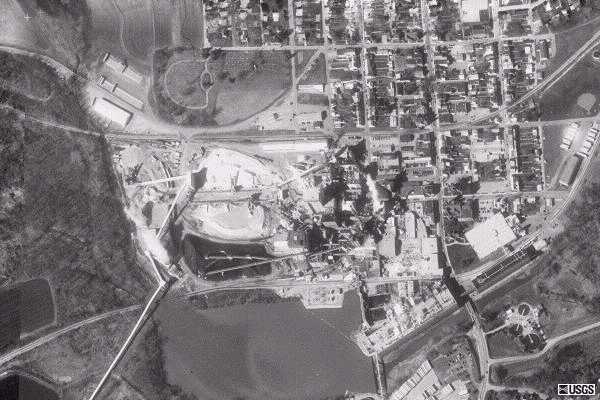 Spring Grove PA is home of the huge P.H.Glatfelter paper mill. In this earlier USGS photo the mill is served by the former Pennsylvania Railroad secondary on the top and by the former Western Maryland Railway York Subdivision on the bottom. Both roads are now operated by Yorkrailway, a short line operator.
Spring Grove PA is home of the huge P.H.Glatfelter paper mill. In this earlier USGS photo the mill is served by the former Pennsylvania Railroad secondary on the top and by the former Western Maryland Railway York Subdivision on the bottom. Both roads are now operated by Yorkrailway, a short line operator.
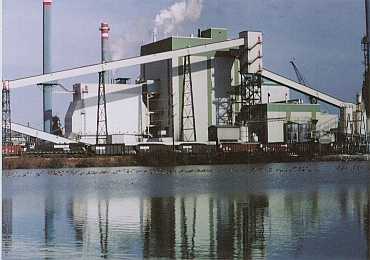 In operation since 1884, the orignial Glatfelter's mill has been modernized for efficient operations in the 21st Century.
In operation since 1884, the orignial Glatfelter's mill has been modernized for efficient operations in the 21st Century.
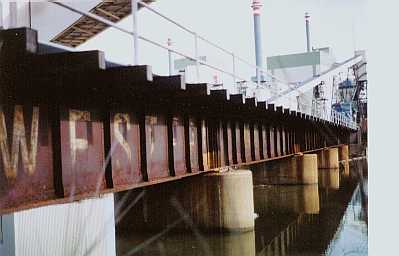 This bridge on the Western Maryland is on the southeast side of Spring Grove. A onsite inspection reveals lettering that reads Western Maryland Railway Fast Freight Line. Thanks to Randy Miller for the tip on this bridge!
This bridge on the Western Maryland is on the southeast side of Spring Grove. A onsite inspection reveals lettering that reads Western Maryland Railway Fast Freight Line. Thanks to Randy Miller for the tip on this bridge!
 Like so many other Western Maryland structures, the lettering is fading fast.
Like so many other Western Maryland structures, the lettering is fading fast.
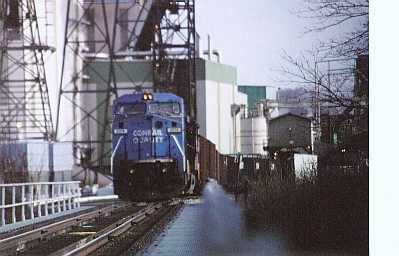
 On my second trip to Spring Grove on December 14, 2002, two cuts of coal hoppers were being unloaded by Norfolk Southern. A fellow I met at the bridge thought that the coal originated in West Virginia (perhaps on the MGA?). My guess, NS brought the coal in on the York Secondary from Wago Junction. In York, the train routes onto the old Western Maryland, being heavier construction than the old PRR secondary. While I was there the section led by Conrail 8374 unloaded 15 cars and pulled away. The next section led by the NS unit pulls up to unload. Further south, 15 empty hoppers sit by the finished product warehouse.
On my second trip to Spring Grove on December 14, 2002, two cuts of coal hoppers were being unloaded by Norfolk Southern. A fellow I met at the bridge thought that the coal originated in West Virginia (perhaps on the MGA?). My guess, NS brought the coal in on the York Secondary from Wago Junction. In York, the train routes onto the old Western Maryland, being heavier construction than the old PRR secondary. While I was there the section led by Conrail 8374 unloaded 15 cars and pulled away. The next section led by the NS unit pulls up to unload. Further south, 15 empty hoppers sit by the finished product warehouse.
Randy Miller reports: "Dave, the coal train has Yorkrail crews on it. We use NS run thru
power. It
takes six of our engines to pull the train out and only three of NS's
engines. The train is usually around 100-110 cars. In the past when the coal came
off
CSX, it was only around 86 cars. This was due in part to Jack's
Mountain.
They would have four engines up front and four on the back to get it
over the
"hill." P.H. Glatfelter II was a Western Maryland director up through the 1960's, assuring that coal was delivered in oxide red hoppers during that time period.
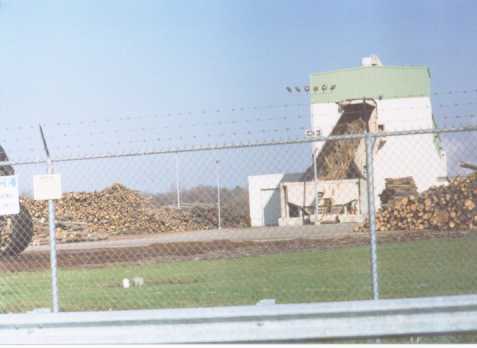 Production of paper starts at this end where pulp wood is chipped. Further along in the process, the chips are cooked with acids to release the pulp fibers from the the lignin glue. A byproduct,black liquor,is a potent liquid that requires big investments in technology to recycle. No matter the amount of technology in this process, paper mills have an unforgettable aroma.
Production of paper starts at this end where pulp wood is chipped. Further along in the process, the chips are cooked with acids to release the pulp fibers from the the lignin glue. A byproduct,black liquor,is a potent liquid that requires big investments in technology to recycle. No matter the amount of technology in this process, paper mills have an unforgettable aroma.
The mill uses 950,000 tons of wood each year. About 1/3 comes from wood chips, a byproduct of sawmills. Glatfelters owns about 20% of the woodlands that supplies the remaining roundwood to the mill. The rest is owned by private owners in four surrounding states. Woodlot management is a cycle of harvest and replanting, paper production does not destroy forests, it maintains them. At one time, WM supplied pulpwood to this mill in specially designed cars that also served the gigantic Westvaco mill at Luke Maryland.
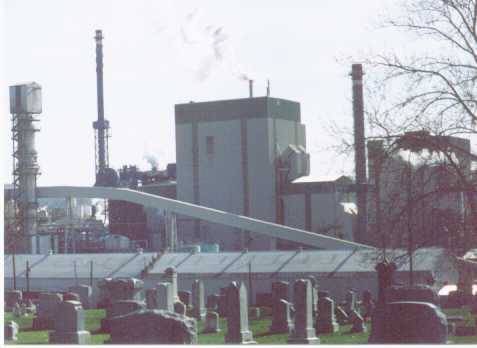 Glatfelter's have been making paper for over 100 years. Spring Grove is still a company town where one can be born, raised, work and die.
Glatfelter's have been making paper for over 100 years. Spring Grove is still a company town where one can be born, raised, work and die.
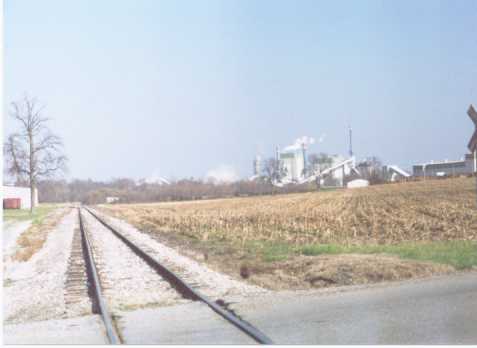 Here we see the WM entering Spring Grove at the finished paper warehouse. Glatfelter's mill rises above the surrounding farmland like a medieval castle dominating its fiefdom.
Here we see the WM entering Spring Grove at the finished paper warehouse. Glatfelter's mill rises above the surrounding farmland like a medieval castle dominating its fiefdom.
Steve Johnson's P.H. Glatfelters Mill Layout- Use Back to return here!
Some other photos of York Co. and Glatfelters Mill -Use Back to return here!
Next Stop- Porters Sideling
Western Maryland Railway and Related Rail Links
Western Maryland Railway Yesterday and Today
World's Greatest Railroads!








